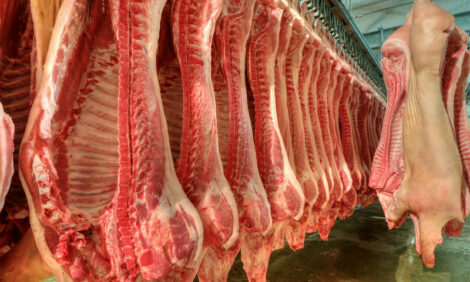



Chinese Pig Farmers Receive Compensation for Losses
CHINA - The hog-to-corn ratio - or ratio of pig meat to maize - has improved lately but pig farmers are relying on compensation schemes to cover their costs.It may never get the same attention as the Chinese currency but another exchange rate is quietly straining every nerve of the market, from policymakers to farmers: the hog-to-corn ratio.
Official source say the exchange rate is closely monitored as a critical reference and a key indicator of inflation. It is used to speculate on changes in policy in a broader context.
Pork is the staple meat in China and is a heavyweight in the basket of prices used in calculating the Consumer Price Index (CPI). The ratio of live hog sales prices at farms to wholesale corn price, calculated by the National Development and Reform Commission (NDRC), rebounded to 5.29 on Wednesday after it fell to a five-year low of 4.6 in April. When the ratio is above 6.0, pig farmers can start thinking about profits.
Live pig prices have fluctuated wildly in recent years, raising concerns that volatility could bleed into monetary and fiscal policy due to the CPI weighting.
The weak pig-to-corn rate in the past year has meant Anhua Agricultural Insurance dishing out compensation of 4.1 million yuan (CNY; US$660,000) to 143 pig farmers in Beijing this month.
"With the compensation, I feel a little bit better," said Cao Xueyi, a veteran pig farmer who got 94,000 yuan for his loss of 1.08 million yuan last year. To help stabilise pork prices, Anhua started selling price insurance last year to offset losses incurred through pig price declines.
"Insurance of live pig prices is a very good way to protect farmers from huge losses," said Tuo Guozhu, an insurance professor with the Capital University of Economics and Business.
The NDRC has also intervened, buying frozen pork on the market for national reserves in March and May, which raised the national average hog price to CNY11.14 per kilogram by 30 April, ending 19 weeks of decline.
Oversupply has been blamed for the price decline since the beginning of this year. Farmers sold 716 million live pigs last year - 20 million more than 2012.
As the government aims for CPI growth of around 3.5 per cent this year, with continuing prudent monetary policy and proactive fiscal policy, too weak or too strong an inflation reading might prompt the central bank to adjust its monetary policy.
"We are not sure whether changes in supply and demand have happened yet because only price increases for two consecutive months can send a clear signal," said Feng Yonghui, chief analyst with the monitoring web site, souzhu.com. "So far, we've seen no obvious reduction in pig production capacity."








